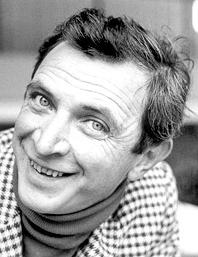John Cranko facts for kids
Quick facts for kids
John Cranko
|
|
|---|---|
 |
|
| Born | 15 August 1927 Rustenburg, Transvaal Union of South Africa
|
| Died | 26 June 1973 (aged 45) On board a transatlantic flight from Philadelphia to Stuttgart
|
| Occupation | Ballet dancer and choreographer |
| Parent(s) | Herbert and Grace Cranko |
John Cyril Cranko (born 15 August 1927 – died 26 June 1973) was a famous South African ballet dancer and choreographer. He worked with important ballet companies like the Royal Ballet and the Stuttgart Ballet.
Contents
Life as a Ballet Creator
Early Years and Training
John Cranko was born in Rustenburg, which was then part of the Transvaal in South Africa. As a child, he loved being creative and even put on puppet shows.
He started his ballet training in Cape Town. His teacher was Dulcie Howes, a leading ballet expert from the University of Cape Town Ballet School. In 1945, when he was just 18, he created his first ballet piece.
In 1946, Cranko moved to London. There, he studied at the Sadler's Wells Ballet School, which later became known as the Royal Ballet. He danced his first role with the Sadler's Wells Ballet in November 1947.
Working in London
Cranko soon started to focus more on creating ballets rather than just dancing. His last performance as a dancer for the Sadler's Wells Ballet was in April 1950. At only 23 years old, he became the main choreographer for the Sadler's Wells Theatre Ballet. This meant he was in charge of creating new dances for the company.
During this time, he created several well-known ballets. For the Festival of Britain in 1951, he choreographed Harlequin in April and the funny ballet Pineapple Poll. He also worked with the composer Benjamin Britten to create the ballet The Prince of the Pagodas in 1954.
Cranko also wrote and developed a musical show called Cranks. It opened in London in 1955 and was very popular. It even moved to Broadway in New York City.
Leading the Stuttgart Ballet
In 1961, John Cranko moved to Stuttgart, Germany. There, he became the director of the Stuttgart Ballet. He brought together many talented dancers, including Marcia Haydée, Egon Madsen, and Richard Cragun.
Under his leadership, the Stuttgart Ballet became very famous around the world. Cranko created many important ballets for the company, such as:
- Romeo and Juliet (1962), based on William Shakespeare's play, with music by Sergei Prokofiev.
- Onegin (1965), based on a Russian novel, with music by Pyotr Ilyich Tchaikovsky.
- The Taming of the Shrew (1969), another Shakespeare adaptation.
The Stuttgart Ballet's international success began with a guest performance at the New York Metropolitan Opera in 1969. Cranko also helped the company start its own ballet school in 1971. This school was later renamed the John Cranko Schule in his honor.
Legacy and Remembrance
John Cranko sadly passed away on 26 June 1973. He was on a flight from Philadelphia to Stuttgart after a successful tour in the United States. He was buried in a small cemetery near Castle Solitude in Stuttgart.
Even after his death, Cranko's work continued to be important. The ballet Voluntaries by Glen Tetley was created in his memory. In 2007, the Stuttgart Ballet held the Cranko Festival to celebrate what would have been his 80th birthday.
The John Cranko Society was founded in Stuttgart in 1975. This group helps people learn about ballet and Cranko's amazing work. They also support new performances and talented dancers, and they give out the John Cranko Award every year.
See also

- In Spanish: John Cranko para niños

